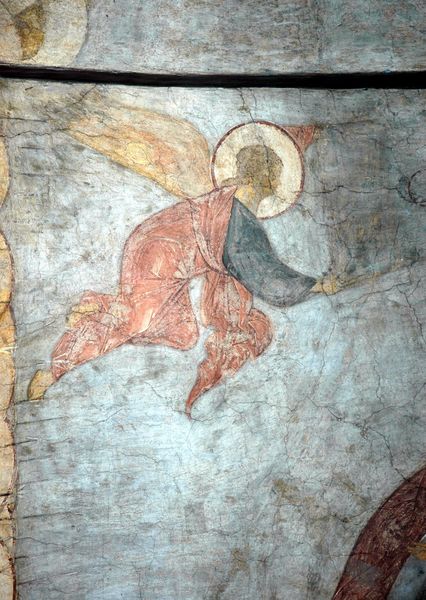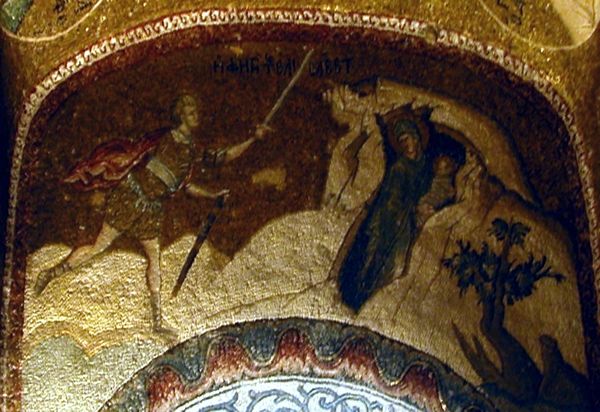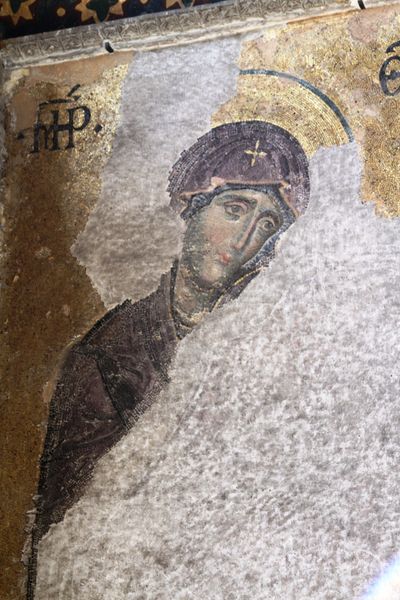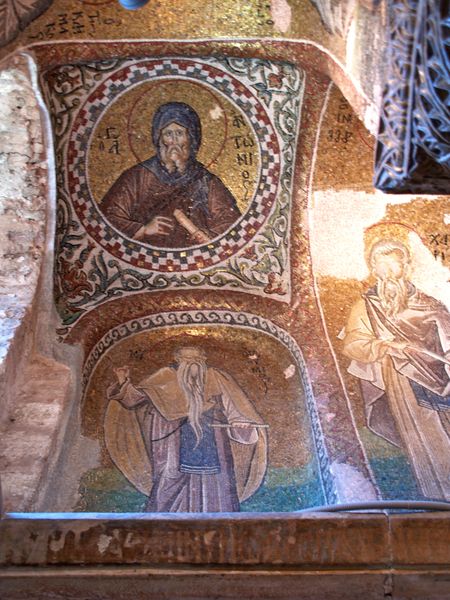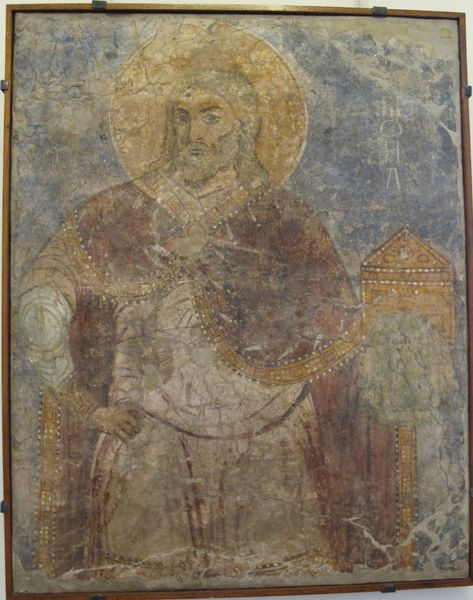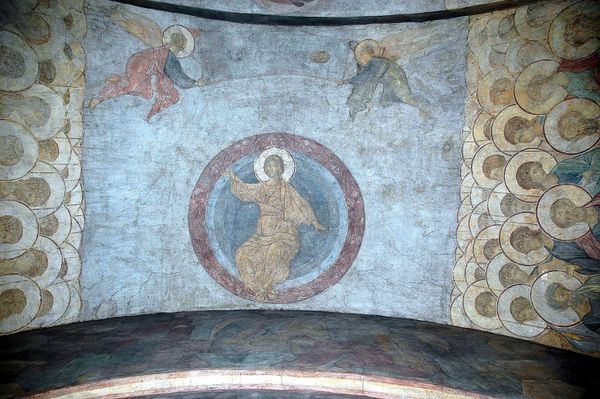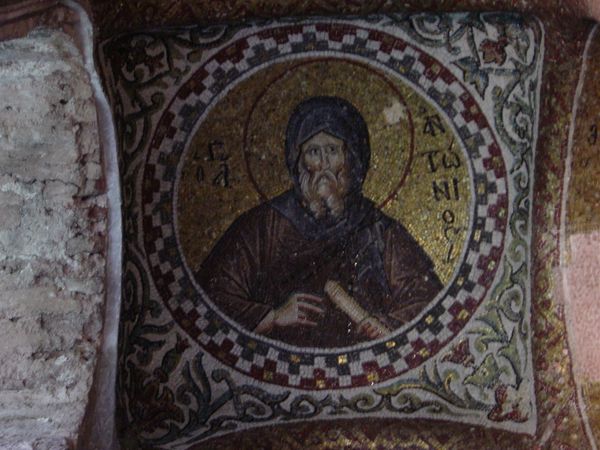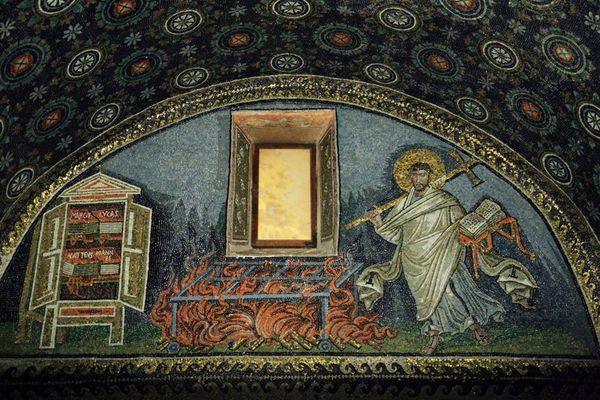
mosaic
#
portrait
#
mosaic
#
byzantine-art
#
medieval
#
figuration
Copyright: Public domain
Curator: Look at "A Monk," a Byzantine mosaic from around 1300, found in Istanbul’s Pammakaristos Church. The gold tesserae radiating behind the figure, especially around his head, create this otherworldly aura...what strikes you most at first glance? Editor: It feels surprisingly grounded, almost intimate. The slightly worn textures, the pale colors—it doesn't have the aggressive pomp I often associate with Byzantine art. There’s a human element shining through. Curator: Indeed. Let's consider how such a texture would arise, how this feeling is conjured up. It comes down to the specific application of each tiny piece of marble and colored glass, the individual decisions by the artisans in creating a patterned, yet ultimately uneven, surface. The light playing on this rough surface fractures, softening the image and imparting a warmer and subdued aura to the character. Editor: I'm drawn to the figure’s stance – a hand raised in blessing or speech. The long beard speaks of wisdom and asceticism. What’s compelling is situating such imagery within its political framework. The Byzantine empire was constantly negotiating power through image and representation. This monk would embody religious authority and Byzantine cultural identity amid social upheaval, and in constant dialogue with Ottoman influence. Curator: Exactly! The mosaic work becomes the perfect medium to fulfill this role. The permanence of mosaic versus a fleeting brushstroke asserts an endurance through meticulous labor. And its presence in a church reinforces the enduring power structures of faith and empire. The labor and specific craftsmanship tells the tale of the empire through carefully placed bits. Editor: Thinking about who likely commissioned and interacted with this mosaic… were there elements of resistance inherent even in the crafting? To what extent did they act as subversive or critical messaging by those who felt marginalized? It invites all sorts of questions. Curator: Yes, these questions of viewership are of importance. We might not find answers today, but thinking about these mosaic fragments is very thought provoking! Editor: I agree! Analyzing Byzantine images within complex societal conditions creates much needed cultural bridges with our present-day dynamics.
Comments
No comments
Be the first to comment and join the conversation on the ultimate creative platform.
